
ojitosmulticolor
Wrap yourself in petals for armor
276 posts
Latest Posts by ojitosmulticolor
My top 10 posts of 2020
So! Inspired by @three–rings (thank you for the website!) here are my most popular posts on tumblr this year.
This post about Suibian which is topping the podium with a large margin, probably because it’s like, the second post in this blog, period. I adore Suibian, so I’m happy with it.
The MDZS translation masterlist, which makes sense because it’s a reference post regularly updated? (as always, if you are aware of a translation I missed, tell me, I’ll add it)
My Lan Zhan feels in the novel in Dafan Mountain. I’m also fine with that one, because I love Lan Zhan very much.
Me going full salt mode about racism in the Westernized danmei fandom. For a post where I basically deleted everything I had written in my first draft, it got a long life.
My Guardian epub post. I never know how many people actually download the epubs/pdf I make, so seeing this post circulating makes me think it’s actually somewhat useful?
This Lan Sizhui feels.
Another work post, this one about my MTL-translation of 2HA. I created a side-blog @wanning-of-the-night-sky to talk about 2HA and my work on it.
This post, also about my 2HA translation/MTL cleaning, specifically about the big update I made in August (but there has been other big updates since, so this one feels a little outdated? but the links are to the current version of the translation, so I guess it’s fine?)
This post, announcing that I would start editing the MTL version of 2HA to make it understandable in English (everyone who had tried the “raw” MTL know that it really wasn’t understandable before). I mostly find it funny now because I really thought I would “just” clean-up names, locations, etc. and it would be fine! And then I would stop! it would be maybe a month of work, top! And now, of course, it has been longer than that, I’ve spend so many hours on this project, I’ve re-translated fully a number of passages, made a ton of translation choices, etc. I don’t regret it but this post in particular feels very “oh sweet summer child” XD
This old post about the homophobia in MDZS world, and how a number of critics I saw about the sex scenes were not really about the sex scenes. I still stand by it, but I’ve been sucked several times since in the fandom debate about homophobia/fetishizing/consent, and this post is very limited in its point of view. But I guess a number of these posts (like, this one about the narrative importance of the noncon kiss on Phoenix Moutain) originated as reblogs of a previous post, so wouldn’t appear in a Top 10 of original posts. A number of my metas are actually answers to other posts, and they probably circulated more than these?
I’m frankly surprised that 2HA is occupying three posts of the top ten, because I moved 2ha content to a side-blog really quickly. I guess a number of people really wanted to read the story now, instead of waiting for the absolutely excellent fantranslation. I can’t say I’m displeased, because I did spend thousand of hours on this project, but also, that’s not really what I would have thought to be the centre of my Tumblr presence. So this was a fun exercise!
I guess the lesson is that you don’t really care about my metas, you just want to read stories, which… valid, I guess.
Xiao Zhan - Global Ambassador for WeTV - 210729
Woke up today to this super amazing news! Xiao Zhan is one of the four ambassadors/spokesperson of WeTV (Tencent International App). Other ambassadors include Yang Yang, Dilireba and YangMi, all three are considered to be very popular actors and actresses in China; plus they have highly anticipated ongoing or upcoming dramas.
On a personal note, I love this advert, it's beautiful the way so many cultures and traditions are shown in the mix. Also particularly because among other countries, it also highlights Singapore, a country I've always had fond memories visiting.
Congratulations Xiao Zhan, wishing you all the best and many many new successes to come.
Xiao Zhan Weibo Update :

I saw the future. There were so few bees left that they cross-bred beekeepers with them so they could better connect with them.
I was taking a test to identify plants (I won because some dude thought pineapples were berries) and after that I met a beekeeper who worked inside of a giant glass beehive and had little antennas and a dope ass beard.

ASK ANGELS MADE FROM NEON AND FUCKING GARBAGE


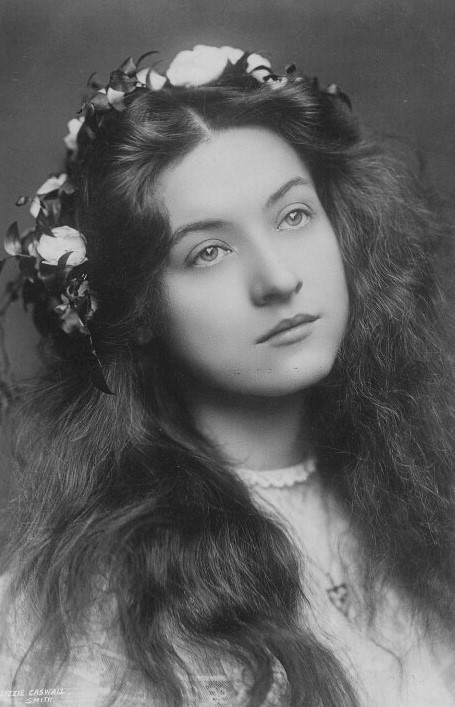
Maude Fealy photographed by Lizzie Caswall Smith
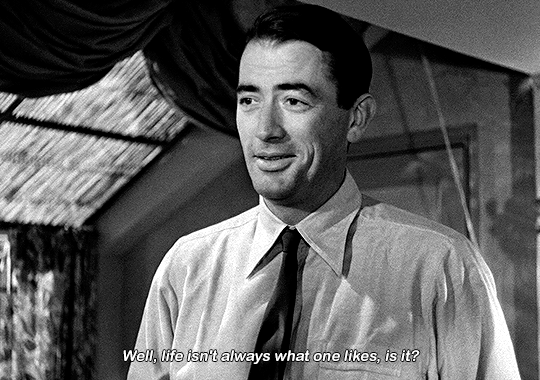
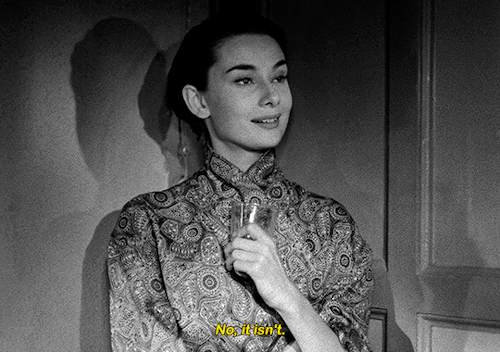
ROMAN HOLIDAY (1953), dir. William Wyler










Marilyn Monroe | The Technicolor filmography
Niagara (1953) Gentlemen Prefer Blondes (1953) How to Marry a Millionaire (1953) River of No Return (1954) There’s No Business Like Show Business (1954) The Seven Year Itch (1955) Bus Stop (1956) The Prince and the Showgirl (1956) Let’s Make Love (1960) Something’s Got To Give (∞)

Walt and Mousketeers Sharon, Karen, Cubby, and Kevin “Moochie” Corcoran. The cake reads “Happy Anniversary Walt Disney’s Magazine.” The magazine, which first started publication in 1955 as Walt Disney’s Mickey Mouse Club Magazine, and later changed to Walt Disney’s Magazine was published until 1959 promoting the club and all Disney offerings.
#walt #waltdisney #disney #waltdisneysmagazine #vintagedisney #mouseketeers #mickeymouseclub #moochie #kevincorcoran #classictelevision #whostheleaderoftheclub https://www.instagram.com/p/CFEQBidJngq/?igshid=1la1ifb5cgw9r
Jack: This is my father, Lucifer. Jack: And this is my dad, Dean. Jack: And this is my dad’s boyfriend, Castiel. Jack: And this is my other dad, Sam, is who is also my dad’s brother. Counselor: Wha- Jack: This is my grandfather, Chuck. You’d know him as god. Jack: And this is my other grandfather, Bobby. He adopted Sam and Dean. Counselor: But- Jack: Oh! And this is my grandfather’s boyfriend, Crowley. He’s also my uncle. Counselor: What the fuck?
I have actually fallen in love with your photography. Love the way you capture light!! Any tips for someone starting out with photography?
Aww, thanks! Absolutely, I’d love to help however I can.
Whether you’re brand-new to photography or just trying to get better, these are my 10 biggest photo tips!
If it seems daunting, don’t worry, it’s not a list everyone needs to run out and complete tomorrow – just a roadmap of things to think about as you learn.
1. The best camera is the one you have with you.

Case in point: my Fuji street kit is so light I even bring it on business shoots, but I’d never bring my heavy Canon kit on a street shoot.
Whether that means a little portable camera or even just your phone, focus on learning the device you’re most-willing to bring places.
All the expensive equipment in the world is worthless if you don’t have it with you at the right moment… plus, the quality of the camera matters infinitely less than the eyes behind it.
2. There’s (almost) no such thing as taking too many frames.

During a recent fast-paced play, I took 4,032 photos. Seriously.
On average, whether shooting for myself or work, I take about 5-10 images for every *one* I choose in editing.
Countless variables benefit from numerous frames. Moments come and go, expressions change, settings can be improved or better compositions found, a dog walks by and the photo gets 100% better. Yes, shoot with intentionality, but never be afraid of overshooting as you learn.
3. Mess around constantly…

…because this was just a random long exposure from exiting an elevator, plus a little editing.
Experimenting with weird stuff is how you find techniques and options you didn’t notice before. Look at a scene you find interesting, and figure out how many ways you can inject another element into it.
The options are limitless. Use an unusual POV or object in the foreground, keep it perfectly symmetrical or extra askew, drag the shutter or let everything silhouette… it trains you to picture how 3D space works in a 2D photo.
4. Look up tutorials/explanations of camera settings, and take a little time to learn what’s affected by a setting so you can control it.

Mastering the fundamentals is vital, and it’s never been easier to learn. Plus, they’re simpler than they seem, I promise!
Getting settings to the point of muscle memory is what lets you catch the quick moments you get one shot at, and troubleshoot situations when something isn’t working.
4. Get lower, higher, or closer…

…but especially closer.
Practically any shot gets more interesting from one of those perspectives, even those not containing crazy birds.
And if a photo is best completely straight-on, commit to it – make it as precise and flat as possible. Attention to those details makes a composition feel balanced and intentional.
5. Editing is half (or more) of the craft, and is basically magic.

Just some basic image prep turns this…

…into this.
There are tons of free photo editing options these days, and a ridiculous number of learning resources available. If you find yourself getting serious one day, though, you can get Lightroom & Photoshop CC for just $10 a month.
It’s easy to overedit a shot, too, but it’s better to go a little far and learn a lot from it than to never try.
Editing can range from just enhancing an image to outright transforming it, so it also benefits greatly from experimentation. Go nuts!
6. Seek out the interesting light wherever you are.

This applies to everything from practical portraits to street photography – contrasts are always engaging.
Whether you need gentle light to put subjects into or weird light to mess with, more light equals more possibilities. And speaking of light…
7. External flashes can be crazy affordable these days ($36 or less!), and make practical, dim situations like events infinitely better.

Speaking as someone who uses high-end lighting equipment daily, you don’t need expensive gear and crazy technical skills to get some nice light in tough spots.
Buy a cheap flash and dome diffuser, slap ‘em on the camera, bounce the light into the ceiling when possible, and adjust the power up/down as you go. Google suggested camera settings to use with flash.
See? Doesn’t have to be scary and overly-technical! Don’t get me wrong, you can do way more with a $2000 5-light portrait setup, but while learning, one cheap flash into the ceiling will get you far.
9. Nature is nice, but also not very challenging.

There’s nothing wrong with it, but you don’t learn a ton from taking photos of already-beautiful things in ambient light.
Branching out from nature (pun unintended) is a good path to keep growing (pun doubly-unintended). Whatever it is you like to shoot, find circumstances and subjects that push you to make a difficult situation look great.
10. Nothing makes you improve more than consistently closing the loop. Shoot, review, edit, post, repeat.

Yup… that’s the actual number of photos I took last year.
Practicing or researching one aspect of photography is good, but you learn infinitely more by going through the whole process again and again.
Getting to the point of “I’ve edited this as well as I can, time to post” means you’ve gotten all you can out of it and are moving on… which isn’t always easy, I know.
Perfectionism is good, but can be paralyzing. If it stops you from creating new things because you’re still obsessing on the old ones, ironically, it’s slowing improvement down… the only way to become better is to push through and try to make the next image a tiny bit better than the last.
11. Cute animals.

They make every photo better. No exceptions.
Ok, sure, I said it was gonna only be 10, but that tip matters as much as all the previous ones combined.
–Colin (instagram)
Behind the scenes of the pool shoot.




You might have seen some of the cool photo I’ve been posting over the past few days. I thought I’d give you a behind the scenes look at what it took to set this up and show you how to do this yourself.

Kiddy pool from Walmart-$22
Dark fabric- already had some but a king size sheet would work.
Fowers- pick some things growing in my yard.
Dry ice- $2 a pound. I used about $10 worth to do 2 shoots that took about an hour. I bought mine at my local Walmart. Some stores carry it but not all.
Fog machine- Optional. We really didn’t need it for the Yang shoot but the wind picked up and played havoc with the dry ice so we switch it on for a bit. These run about $40 at party City.
Editing software- free. I use gimp.
10 Things: How to Photograph a Meteor Shower
Taking photographs of a meteor shower can be an exercise in patience as meteors streak across the sky quickly and unannounced, but with these tips – and some good fortune – you might be rewarded with a great photo.
These tips are meant for a DSLR or mirrorless camera, but some point-and-shoot cameras with manual controls could be used as well.
1. The Photo Op: Perseids Meteors
The Perseids are dusty remnants of comet 109P/Swift-Tuttle.
Earth passes through the comet’s invisible, multi-billion mile trail of tiny debris each year around August, creating a meteor shower of so-called “shooting stars” as the particles are vaporized in our atmosphere.
Perseid meteors already are streaking across the sky. This year’s shower peaks on a moonless summer night -from 4 pm on the 12th until 4 am on the 13th Eastern Daylight Time.
Read more on the Perseids ›
2. Get away from city lights and find a place with dark skies.

In this 30 second exposure, a meteor streaks across the sky in Spruce Knob, West Virginia, during the 2016 Perseids meteor shower. Credit: NASA/Bill Ingalls
Too much light and it will be hard for your eyes to see fainter meteors, plus your image will get flooded with the glow of light. Turning down the brightness of the camera’s LCD screen will help keep your eyes adjusted to the dark. The peak of the 2018 Perseid meteor shower occurs just after the new moon, meaning a thin crescent will set long before the best viewing hours, leaving hopeful sky watchers with a moonlight-free sky!
3. Use a tripod.

In this ten-second exposure, a meteor streaks across the sky above Washington, DC during the 2015 Perseids meteor shower, Credit: NASA/Joel Kowsky
Meteor photography requires long exposures, and even the steadiest of hands can’t hold a camera still enough for a clear shot. Heavier tripods help reduce shaking caused by wind and footsteps, but even a lightweight tripod will do. You can always place sandbags against the feet of the tripod to add weight and stability. If you don’t have a tripod, you might be able to prop your camera on or up against something around you, but be sure to secure your camera.
4. Use a wide-angle lens.

In this 30 second exposure taken with a circular fish-eye lens, a meteor streaks across the sky during the 2016 Perseids meteor shower as a photographer wipes moisture from the camera lens Friday, August 12, 2016 in Spruce Knob, West Virginia. Credit: NASA/Bill Ingalls
A wide-angle lens will capture more of the sky and give you a greater chance of capturing a meteor in your shot, while a zoom lens captures a smaller area of the sky. The odds of a meteor streaking past that small patch are lower.
5. Use a shutter release cable or the camera’s built-in timer.

Long exposures are not just for meteors. In this shot taken at Joshua Tree National Park, a hiker’s headlamp leaves a trail of light along a twilight path. Credit: National Park Service / Hannah Schwalbe
A tripod does a great job of reducing most of the shaking your camera experiences, but even the act of pressing the shutter button can blur your extended exposure. Using the self-timer gives you several seconds for any shaking from pressing the shutter button to stop before the shutter is released. A shutter release cable (without a self-timer) eliminates the need to touch the camera at all. And if your camera has wifi capabilities, you might be able to activate the shutter from a mobile device.
6. Manually focus your lens.

In this 30 second exposure, a meteor streaks across the sky during the annual Perseids meteor shower Friday, August 12, 2016 in Spruce Knob, West Virginia. Credit: NASA/Bill Ingalls
At night, autofocus will struggle to find something on which to focus. Setting your focus to infinity will get you close, but chances are you’ll have to take some test images and do some fine tuning. With your camera on a tripod, take a test image lasting a few seconds, then use the camera’s screen to review the image. Zoom in to a star to see how sharp your focus is. If the stars look like fuzzy blobs, make tiny adjustments to the focus and take another test image.
Repeat until you are happy with the result.
If your camera has a zoomable electronic viewfinder or live view option, you might be able to zoom to a star and focus without having to take a test image.
7. Aim your camera.

The Perseids appear to radiate from the constellation Perseus, visible in the northern sky soon after sunset this time of year.
Even though we don’t know when or where a single meteor will appear, we do know the general area from which they’ll originate.
Meteor showers get their name based on the point in the sky from which they appear to radiate. In the case of the Perseids, during their peak, they appear to come from the direction of the constellation Perseus in the northern sky.
8. Calculate your exposure time.

In this 20-second exposure, a meteor lights up the sky over the top of a mountain ridge near Park City, Utah. Even though this image was captured during the annual Perseid meteor shower, this “shooting star” is probably not one of the Perseid meteors, which originate from material left behind by Comet Swift-Tuttle. Instead, it’s likely one of the many bits of rock and dust that randomly fall into the atmosphere on any given night. Credit: NASA/Bill Dunford
As Earth rotates, the stars in the sky appear to move, and if your shutter is open long enough, you might capture some of that movement. If you want to avoid apparent star movement, you can follow the 500 Rule. Take 500 and divide it by the length in millimeters of your lens. The resulting number is the length of time in seconds that you can keep your shutter open before seeing star trails. For example, if you’re using a 20 mm lens, 25 seconds (500 divided by 20) is the longest you can set your exposure time before star trails start to show up in your images.
9. Experiment!

In this 30 second exposure photo, hikers find their way to the top of Spruce Knob in West Virginia to view the annual Perseids meteor shower, Friday, August 12, 2016. Credit: NASA/Bill Ingalls
Once you know the maximum exposure time, you can set your shutter priority to that length and let the camera calculate other settings for your first image. Depending on how the image turns out, you can manually adjust aperture (set it to a lower number if the image is too dark) and ISO (set it to a higher number if the image is too dark) to improve your next images. Changing only one setting at a time will give you a better understanding of how those changes affect your image.
10. Enjoy the show.

The crew of the International Space Station captured this Perseid meteor falling to Earth over China in 2011. Credit: NASA
With your camera settings adjusted, capturing that perfect photo is just a matter of time and luck. The highest rate of meteors visible per hour is in the hours after midnight and before dawn. Set up your camera next to a lounge chair or a blanket to witness the wonder of a meteor shower for yourself – and, with any luck, you’ll take home some envy-inducing shots, too!
Make sure to follow us on Tumblr for your regular dose of space: http://nasa.tumblr.com.
Photography Basics

This post is about basics of photography, about what you need to be careful of, specifically for DSLR cameras.
DSLR stands for Digital Single-Lens Reflex. How does this camera work differently from your phone? Well, it has a mirror inside of it, that snaps up when you’re taking a picture so the sensor is exposed to capture the image. Also please understand that I had photography as a class, but I tried to simplify it as much as I could because it was simpler for me and would probably be for those that don’t understand these things as I do.
Don’t go for auto settings!
First thing, make sure that your camera is set up for the best quality, that it’s on manual and that you know where you have to press for adjusting the things I’m going to mention.
The first thing is aperture, which is just how wide your lens is open. It measures how much light comes through, which means that the image is lighter if it’s open wider or darker if it’s closed more. It’s marked as f/n, which means it could be f/8. And each next value is the opening increased to double or decreased to half. Something that always confuses is that the lower the number the bigger the opening. This also determines how blurred the background is (if it’s farther away from the thing that’s focused) and it’s higher if the value is smaller (f/2).
The next one is shutter speed, which is how long your sensor is exposed. The problem if you need slower speed is that the image will most likely be blurry, unless you have your camera on a stand. If it’s at a long speed, possibly 1 second, the sensor receives more light, but when the time is shorter like 1/1000, the sensor receives less light.
The next thing is ISO, which changes the sensitivity of the sensor. The problem is that when ISO is too high like 1600, there’s photographic noise. I suggest you use 100 or 200 on a regular basis, or a higher value only when it’s too dark even if you’ve done everything else with the other two.
Now, you need to adjust these three for whatever you need. For example, if you want to take a portrait of someone in nature, most likely you’ll want to have the background fairly blurry, so you choose f/2.8 and to not have it over exposed, you’ll have your shutter speed at 1/1000 or something like that, and ISO at 100 since you’re most likely going to take those pictures when the natural lighting is great for the picture.
Now, that we’ve finished talking about exposure, let’s talk about lighting. The best time for pictures is in the morning, both for the light (no strong shadows) and because there aren’t as many particles in the air as towards the evening. But if you need to use artificial lighting, you need to be careful that the light is white, as neutral as possible.
Connected to the previous thing, you have to be careful of white balance. This is one thing that I usually put on automatic since it’s pretty accurate, but otherwise, it just depends on the type of light you’re using.
Focus is very important to learn because you’ll always do it better as in on the right thing and it’s faster than auto focus. When focusing on people or animals, you’re supposed to focus on the eyes.
Now, the next thing is composition.
A rule, something you should always try to stick to because it’ll make your pictures look professional. That’s Rule of Thirds. That means that the picture is divided by two horizontal and two vertical lines, so try to stick to them or where the lines cross.

Use diagonal lines (guides) if you want to make something seem active or use horizontal lines (guides) to make something seem static.
Make sure that what you do with focus and such is with a reason. Don’t just do it because it looks better.
There are a few more things you should watch out for, but they’re pretty much self explanatory: perspective, framing with objects in the picture, use natural lines.
Now we’re moving on to post production.
There’s not much that I’d suggest for you to do, but the most important is to utilize the crop tool because you won’t always be satisfied with how it is because you couldn’t stand close enough or whatever. So use that, but use it wisely and don’t crop out things that are part of the message. This is specific to photographic journalism.
The next thing you should do is adjust brightness and everything that comes along. The pictures might look good, but there’s always room for tweaking and just a little bit more brightness could make the picture better.
Then, saturation. I don’t think I’ve been able to take an incredibly saturated picture (the one on top had it’s saturation adjusted to bring out all the colours). Don’t over do it because then the post production might be noticeable and the best post-production is when you can’t really tell.
Then you have different filters, like black and white. But I suggest you to take them with a grain of salt and don’t do every picture black and white or sepia (unless it’s a project where all the pictures are themed). An example of good use of black and white is with old things.


The Four Roses and Lady of the Roses, 1901 by František Dvořák (Czech, 1862–1927)
Podrían atravesar el infierno... Y volver. 🔥
Estuve haciendo estos kit de collage para quien desee utilizarlos. Iré subiendo más pronto. 💕 Van con mucho amor. El link está en mi descripción.

《Do you realize that everyone you know some day will die? And instead of saying all of your goodbyes let them know you realize that life goes fast; it's hard to make that good things last》- Do You Realize, The Flaming Lips Aquí uno que tenía guardado desde hace mucho y ahora puedo subir, jeje. #collage #collageart #magazine #quote #frase #collagechile #collageanalogico #collageartist #analogcollage #art #scan #collagework #paper #handcutcollage #chile #colectivo_c #theflaminglips (en Santiago, Chile) https://www.instagram.com/p/B7woxr8DoLZ/?igshid=1x6w9ma7fe8wj

《And you must keep your soul like a secret in your throat 》- Vampires will never hurt you, My Chemical Romance. Nunca pensé que les dedicaría un collage a mis bebitos, pero hace unos días estaba escuchando música mientras miraba mis recortes y tadá. 💓 #collage #collageart #magazine #quote #collagechile #collageanalogico #collageartist #analogcollage #art #scan #collagework #paper #handcutcollage #chile #colectivo_c #mychemicalromance #mcr #ibroughtyoumybulletsyoubroughtmeyourlove #fanart #gerardway #raytoro #mikeyway #frankiero #minimalist https://www.instagram.com/p/B9p010hD171/?igshid=q2lo034zou4s

En la salud y en la pandemia. 💕
Vi esa foto y lo primero que se me vino a la cabeza fueron las cartitas de San Valentín. Se me hizo divertido el juego de palabras… y aquí estamos.
Cuídense mucho y, si pueden, quédense en sus casitas. (en Santiago, Chile) https://www.instagram.com/p/B-Da7LwDJ9F/?igshid=19j88xibvwcn8

entre el sueño y los gatos últimamente soy más paciente conmigo misma: no me exijo crear y registrar, sino que lo hago cuando lo siento correcto y me hace más feliz estas fotitos las tomé hace como una semana, aprox. creo que se nota el resultado. 💕 #photography #goldenhour #cat #quarantine #quarantinephotography #photoshoot #fotosdecuarentena #warm #horadorada #фотография #фото (en Santiago, Chile) https://www.instagram.com/p/B_f_FcPDGhl/?igshid=1c3yq3hu24tcc














The enchanted tarot by Farber, Monte; Zerner, Amy. 1990.

Dartmoor, Near Princetown Raphael Tuck & Sons’ “Oilette” vintage postcard no.7748

Moss filaments carrying spore capsules Life on Earth, David Attenborough 1979
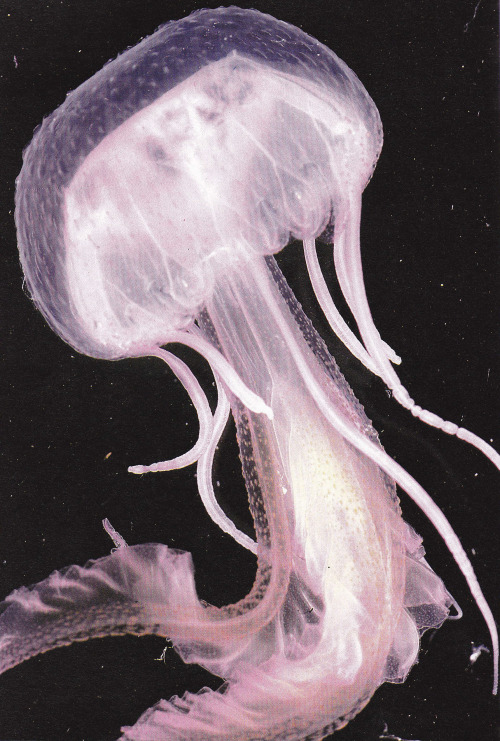
Jellyfish, Bermuda Life on Earth, David Attenborough 1979

Pollen blowing from male flowers of a pine tree Life on Earth, David Attenborough, 1979
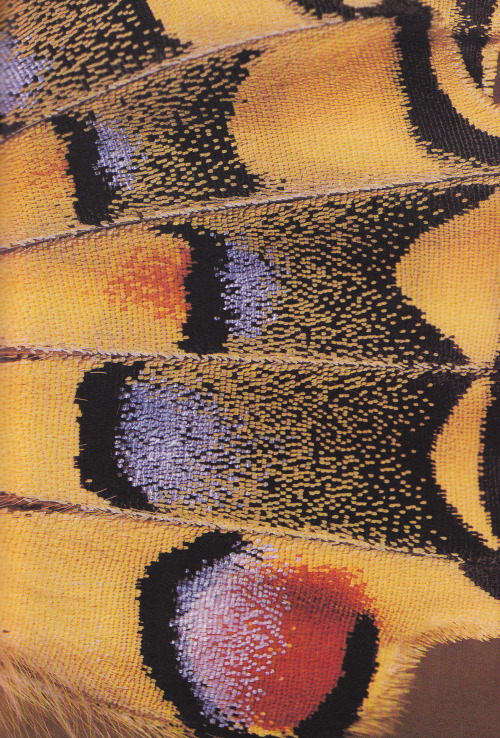
Wing of a swallowtail butterfly Life on Earth, David Attenborough, 1979

Honeybees, Life on Earth, David Attenborough, 1979